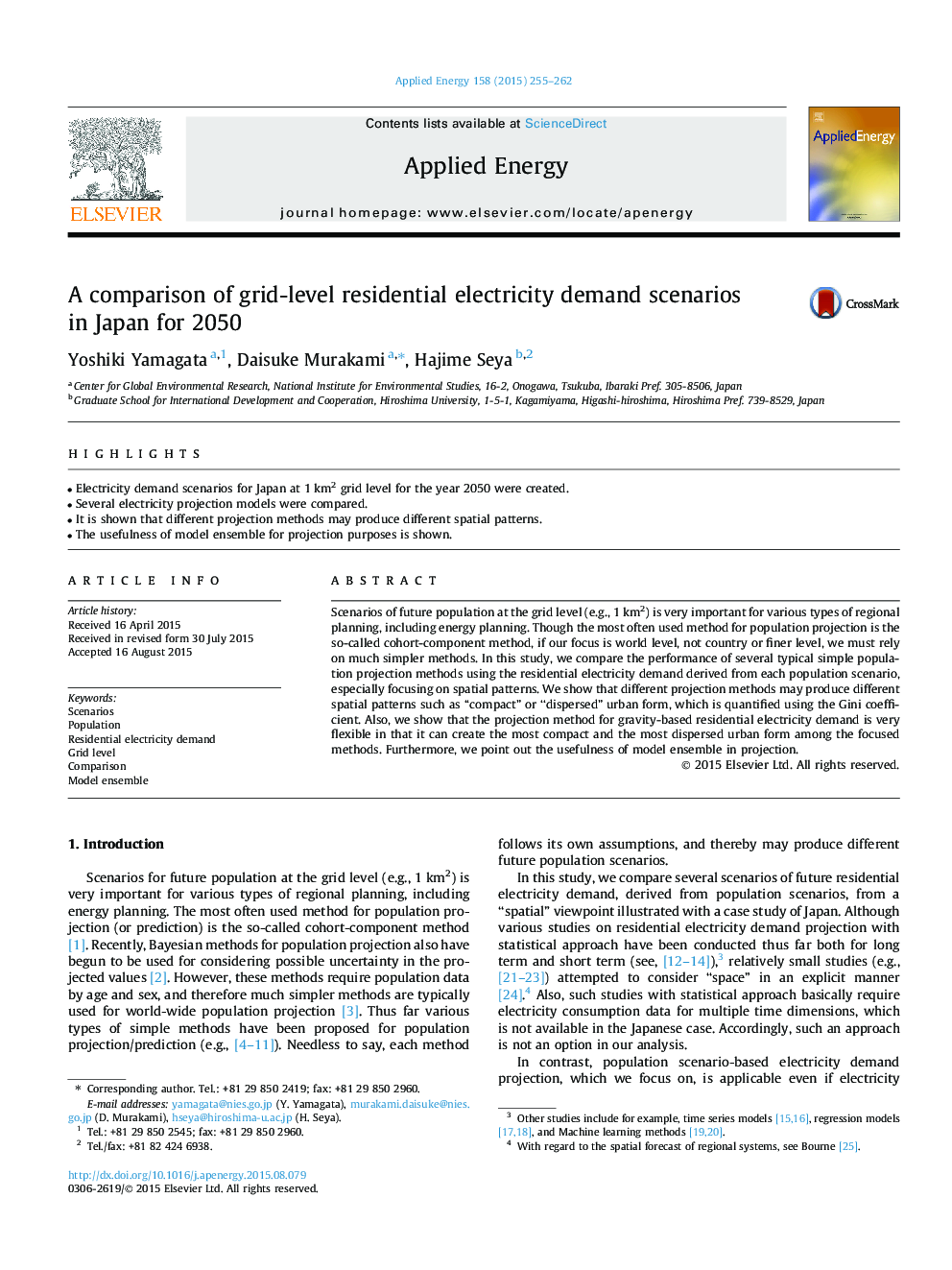| Article ID | Journal | Published Year | Pages | File Type |
|---|---|---|---|---|
| 6685714 | Applied Energy | 2015 | 8 Pages |
Abstract
Scenarios of future population at the grid level (e.g., 1Â km2) is very important for various types of regional planning, including energy planning. Though the most often used method for population projection is the so-called cohort-component method, if our focus is world level, not country or finer level, we must rely on much simpler methods. In this study, we compare the performance of several typical simple population projection methods using the residential electricity demand derived from each population scenario, especially focusing on spatial patterns. We show that different projection methods may produce different spatial patterns such as “compact” or “dispersed” urban form, which is quantified using the Gini coefficient. Also, we show that the projection method for gravity-based residential electricity demand is very flexible in that it can create the most compact and the most dispersed urban form among the focused methods. Furthermore, we point out the usefulness of model ensemble in projection.
Related Topics
Physical Sciences and Engineering
Energy
Energy Engineering and Power Technology
Authors
Yoshiki Yamagata, Daisuke Murakami, Hajime Seya,
